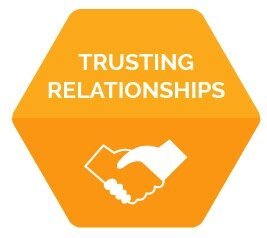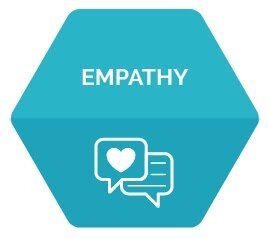Transforming Education: “You Can’t Wrestle a Cloud”
Written by Kelly Ocasio (Senior Consultant) and Brigid Moriarty-Guerrero (Senior Consultant)
For the past dozen years, 2Revolutions has continually learned, grown, tested, and iterated on various ideas about education innovation. In 2014, 2Revolutions (2Rev) created “So You Think You Want to Innovate?” - a tool designed to help districts re-envision education to meet the demands of our ever-changing world by helping to seed or grow a culture of innovation. The purpose of this tool was to support educators and broader stakeholders to "cross the chasm" (Figure 1) - to move from simply improving the existing system to innovating a new system our students need - trying and implementing new ideas and approaches. This was (and still is) an important and bold mindset shift that drives our work today.
Figure 1: Crossing the Chasm
As we work with partners who want to transform their systems, schools, and capacity, one common denominator runs as the central challenge in all of our work: managing change. In each context, our partners want drastically different outcomes for students. While our desire for education innovation drives many school transformation efforts, we believe that in order to truly unlock system transformation, we must approach the challenge of change with a new understanding and from a different perspective.
If you have also worked within educational systems, perhaps you have noticed that some change seems to happen almost effortlessly as something catches on quickly and takes root, while other times change efforts lead to frustration, confusion, and even to “dead ends”. As we have explored these experiences more, we’re convinced that, as a field, we’ve been working from an outdated change framework. We have been stuck in a belief that change is monocentric, that it is originating from one source (“top down”), and can in fact be effectively managed, communicated, and strategically planned out many years in advance. We often tend to view change as simplistic, straightforward, and linear. For example: a new leader emerges; leader sets a vision/goal; organization moves in new direction; change is accomplished.
Based on our own experience - and a range of research (see references below) - we assert that this is a simplistic view of transformational change and that, in reality, change is polycentric. That means that in any system, change is constantly happening. All players in the system are doing the best they can within their “place” in the system, utilizing the resources they have available: both from the system itself, as well as their personal resources and capacity. The concept of polycentricity is not new, but it is not often applied to an education context. It is primarily used in the context of governance (often, specifically climate governance). Instead of a “monocentric hierarchy”, where governmental units at higher levels make all collective-choice decisions and units at lower levels simply follow commands from above, “a polycentric system is one in which governmental units both compete and cooperate, interact and learn from one another, and responsibilities at different governmental levels are tailored to match the scale of the public services they provide.”
Similarly, in applying polycentricity to the education context, we have seen that change is emerging from everywhere across the system, all the time. People across our districts and schools - from students to educators to leaders to community members - are constantly engaged in reforming and improving their lives, work, and experiences. Educators’ sense of ownership and agency within transformation efforts has been studied by researchers such as Cynthia Coburn, who asserts that in order to scale reform efforts, we must further increase educators’ ownership over the change we seek. This challenges the commonly-held belief that true change efforts occur “top down”, originating from one agent, leader, or vision, or that it can even be effectively “managed” at all. This insight informs our updated approach to transformation: that change is, in fact, polycentric and therefore we must approach education transformation differently than we have been. The key difference between traditional understanding about change and a more deliberately polycentric approach is the locus of control (the agent of change). In traditional frameworks, there is most often a leader (or a few leaders) who drive the change, while our approach asserts that the change is driven by the distributive principle of polycentricity, whereby everyone in the system has the agency to play a role in the change we seek. Not only is this approach critical to ensuring successful transformation, but failure to effectively distribute agency and ownership in this way may actually lead to the failure of change efforts.
According to Thjis Homan, a professor in Implementation and Change Management in the Netherlands, each individual in a system, who is (at all times) enacting change within their context, creates “clouds” of knowledge and activity that impact change. Think about any school system right now: there are always individual pockets (or clouds) of innovation emerging - within classrooms, teams, communities, etc. But, you can’t wrestle a cloud. We can, however, observe patterns and respond in ways that adapt and integrate those clouds. So, the work becomes identifying and leveraging the clouds that already exist. The key to transformational change is to harness the right set of enablers that will allow the clouds to gain momentum and truly transform the system.
So, within the context of polycentricity, what kind of enablers will help unlock transformation in ways that don’t attempt to “wrestle a cloud”? While we are constantly evolving and learning at 2Rev, we have over a decade of experience doing this work and understand the research surrounding the conditions that enable polycentric change. We offer below, in Figure 2, a prototype about a few “transformational enablers” that might help accelerate transformation in our education systems. Although not in the education context directly, we noted many similarities across our prototype ideas and the conditions identified in the context of polycentric systems change in the climate governance body of research. We will continue testing these enablers in our work over the coming months and will highlight further learning in an upcoming blog post, where we intend to go into more depth about a refined set of enablers illustrated in our work with American districts and schools.
Figure 2: Prototype of Transformational Enablers
Trusting Relationships
Change happens through people and it happens at the speed of trust. Transformation must center people and relationships within and throughout the process of transformation.
Empathy
Lead with empathy as a way to actively understand individual experiences, perspectives, and needs. Taking a “garden gnome” approach (observing and building understanding of a system in order to view the system from different angles and make correct diagnoses) is a profound strategy for building deep empathy.
Engender Ownership
Our theory of action prioritizes context and people within a geographic area or community. It’s necessary to understand and hone in on individual identities, values, and experiences as a way to engender ownership of the work, build buy-in, and ultimately transform the system.
Shared Power
In order for transformation to unfold, all system “players” must be able to act in meaningful ways, encouraging both “grassroots” and “grasstops” engagement and eliminating power imbalances by ensuring that all “players” have the agency to change the system.
Equity-Centered Design
It’s important to redesign education systems and create radically different experiences and outcomes for youth through an equity-centered design approach. We activate a culture of risk-taking through using a design process that prioritizes a bias toward action (vs. inaction), trying new things, and learning from them quickly in order to make lasting transformation.
While we continue to learn, test, and co-create these ideas over the coming months, we will share our reflections and updates. We aim to further unpack these transformational enablers in action, explore how systems move across chasms towards transformational learning, and provide a methodology for organizations to get started in embracing polycentricity in their own efforts. In a recent blog post, our founding partners Todd Kern and Adam Rubin highlight our team’s intent to document and share our learning more explicitly in 2020. We are excited to bring you into 2Rev’s “test kitchen” as we explore our updated theory of transformation grounded in polycentric change.
In closing, we encourage you to reflect on the transformation you’ve seen or experienced in your context. What happened? How did the change occur? Which enablers helped accelerate progress? What inhibitors blocked the change in process? Was the nature of polycentricity leveraged in this effort? In what ways have you seen polycentricity show up in your context? We encourage you to send us a note or share a reflection in the comments below.
References
Aligica, P. D., & Tarko, V. (2012). Polycentricity; From Polanyi to Ostrom, and beyond. Governance, 25(2), 237–262.
Cole, D. H. Advantages of a Polycentric Approach to Climate Change Policy (p. 114)
Reference from Ostrom, E. A Polycentric Approach for Coping with Climate Change Policy Research Working Paper 5095 (World Bank, 2009)
Cole, D. H. From global to polycentric climate governance. Clim. Law 2, 395–413 (2011)







